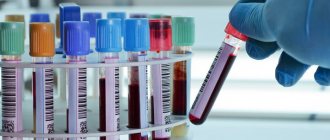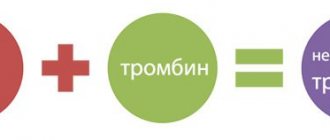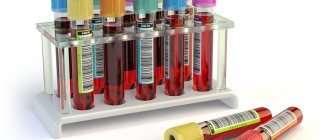Causes of elevated enzymes
Elevated enzymes in blood tests are the most common. The trigger for this biochemical process can be:
- gallbladder colic;
- peritonitis;
- morbid obesity;
- HIV;
- gout;
- myocardial infarction;
- duodenal ulcer;
- systemic lupus erythematosus;
- acute pancreatitis;
- pancreas cancer;
- subhepatic hepatitis;
- intestinal obstruction;
- diabetes;
- dysfunction of the renal pelvis;
- pancreatic necrosis;
- choleostasis (small amount of bile secreted).
Promotes high enzymes in biochemical blood tests and mumps (mumps). A disease of infectious origin affects the pancreas, organs of the central nervous system, testes and salivary glands. If this particular disease has been diagnosed, professional treatment should be started immediately.
A similar situation is observed with enzymes in the blood in some fractures of tubular bones rich in lipid molecules. Blood lipase may be elevated due to the use of certain groups of drugs, including analgesics (painkillers), sleeping pills, heparins, antibiotics and sedatives.
The main reasons for the increase in the indicator?
An increase in pancreatic lipase indicates pancreatic pathology
Pancreatic lipase has a high diagnostic value in determining diseases of the pancreas. During pathological processes in the pancreas, the concentration of this enzyme increases several times.
At the early stage of development of pancreatitis, the level of lipase increases slightly, so diagnosing the disease is difficult and additional markers need to be studied.
Increased lipase levels may occur in the following cases:
- Gallbladder pathologies.
- Perforation of the stomach.
- Intrahepatic cholestasis.
- Intestinal diseases.
- Kidney failure.
- Tumor processes.
- Peritonitis.
- Autoimmune diseases.
- Diabetes.
A high level of lipase in the blood indicates an inflammatory process in the digestive system, namely in the pancreas, which occurs in an acute form.
From the video you can learn the main symptoms of pancreatitis:
Read: Total protein in the blood is elevated - what does this mean and what to do?
The cause of an increase in the enzyme in some cases may be a fracture of a tubular bone and various injuries. An increase in the concentration of a digestive enzyme is detected in people who take analgesics or barbiturates. In this case, the indicator will not be overestimated.
Why is high lipase level dangerous?
Blockage of the pancreatic duct provokes an increase in pressure, organ tissue is destroyed and digestive enzymes leak into the bloodstream. An increase in lipase several times is a rather dangerous condition and can result in serious consequences.
The enzyme is rapidly activated and its own enzymes damage the body’s tissues and lead to their death. Acute pancreatitis causes damage to internal organs and tissues. Most often, the consequence of this is renal or liver failure, intoxication shock, acute heart failure, and sepsis.
Lipase paired with amylase
The reason for prescribing tests such as enzymes produced by the pancreas are, for the most part, severe symptoms of acute conditions of the digestive system:
- Soreness, which is called “shingles”, because it affects not only the location of the gland. Starting somewhere in the epigastric region and quickly spreading to both hypochondrium, the pain moves to the back and chest, its intensity is so great that patients cannot restrain groans and screams;
- Fever usually does not occur immediately; body temperature rises as complications develop;
- A person’s suffering is not limited to painful nausea; it is accompanied by “fountain” repeated vomiting, which does not alleviate the condition;
- Attempts to eat lead to a worsening of the situation (the pain intensifies, vomiting continues, so the desire to even look at food disappears);
- The cardiovascular system, for its part, reacts by lowering blood pressure and increasing heart rate.
An increased concentration of lipase strongly indicates problems in the pancreatic parenchyma, so the study of this lipolytic enzyme in the blood plasma, as usual, is prescribed after another analysis - the determination of glycoside hydrolase (alpha-amylase) in the blood. Moreover, this enzyme (lipase) often turns out to be more informative, since its sensitivity and specificity are higher. For example, lipase in the blood is increased (very significantly - up to 200! times) after 4-7 hours (peak - after 24 hours) and, if inflammation subsides, the concentration returns to normal after 1 - 2 weeks.
Amylase behaves a little differently in this regard: increased activity is noted after 6–12 hours, and the levels of the glycolytic enzyme, which catalyzes the reaction of starch and glycogen breakdown, return to normal within 2 days to a week (of course, if the process in the organ itself ends safely) .
In general, changes in these two indicators increase with the development of an inflammatory reaction in the pancreatic parenchyma, and then decrease if the reaction declines, moving, one might say, synchronously. When both parameters are determined, acute pancreatitis can be diagnosed in 98% of cases.
Meanwhile, high rates do not always agree with the severity of the pathological condition, so relying only on the numerical values of glycolytic (alpha-amylase) and lipolytic (lipase) enzymes in the blood is not worth it.
Undoubtedly, first of all, an increased concentration of lipase in the blood makes one suspect acute pancreatitis. However, particularly complex situations require differentiation of this acute condition from other, clinically similar and equally dangerous diseases, therefore the range of indications for prescribing such an analysis is highlighted:
- An inflammatory reaction that suddenly started and began to develop rapidly in the tissue of the pancreas itself (acute pancreatitis);
- Problems that suddenly arise due to the formation and accumulation of stones in the nearest “neighbor”, the oval sac - the gallbladder (acute cholecystitis);
- Chronic inflammatory process localized in the parenchyma of the pancreas (chronic pancreatitis) in the acute phase;
- Perforated gastric ulcer;
- Renal failure (both acute acute renal failure and chronic renal failure);
- Diabetes mellitus (diabetic ketoacidosis - DKA, which is more typical for type 1 diabetes);
- Severe damage to the liver parenchyma (cirrhosis);
- High (small intestinal) intestinal obstruction;
- Chronic alcoholism;
- Organ transplantation.
And again, laboratory diagnostics are not limited to the study of only one lipolytic enzyme in the blood plasma; it is advisable to include in the protocol the determination of other enzymes, in particular alpha-amylase.
Preparation for the study of lipase activity does not stand out in any way among the preparatory activities for other biochemical tests. A patient interested in receiving a reliable answer for the first time should go rested, calm, and hungry (stop eating 12–14 hours before the test). By the way, you should cancel your usual smoking breaks half an hour before venipuncture or forget about cigarettes that morning altogether.
Is there a possibility of error in the research?
Taking oral contraceptives may interfere with test results
Deviations in the results of a lipase level test are possible not only due to improper preparation for the test. There are a number of reasons that contribute to obtaining an incorrect representation of the course of the disease.
- Taking oral contraceptives, corticosteroids, ibuprofen, captocryl, indomethacin, heparin and furosemide.
- Injuries and bone fractures are also accompanied by an increase in the enzyme in the blood.
- Manifestation of the acute stage of pancreatitis, in which the amount of lipase remains normal on the first day of the disease.
- Hereditary hyperlipidemia.
- Chronic kidney disease.
- Congenital deficiency of pancreatic lipase.
- Preceding the test is an internal organ transplant.
- Chronic inflammation of the pancreas, in which lipase may be normal or slightly decreased.
- In infants in the first 8 weeks of life, lipase levels may be extremely low, which is normal.
If you are taking any medications, you must tell your doctor before scheduling the test.
Function and role in the body
Before explaining the role of lipase as an enzyme, it is important to explain what “enzymes” are and why they are needed.
An enzyme (synonym: enzyme) is a special molecule that breaks down a chemical compound into simpler components. There are a large variety of enzymes, and each of them is responsible for a specific molecule that needs to be broken down. They look like recesses for molecules: for example, if water looks like a square and two circles (1 hydrogen molecule and 2 oxygen molecules), then the enzyme that breaks it down will look like a recess for one square and two circles. This explains the fact that a certain enzyme can only break down one type of molecule: others are not physically suitable for its shape. After successful cleavage, the enzyme releases decay products into the environment and looks for its next “victim.”
Lipase is the general name for a group of enzymes (we will look at individual types in the next subsection). Functions of lipase: breakdown of fats, phosphorus compounds and some vitamins. Lipase is produced by many tissues of the body, but the main share is produced by the pancreas. Behind it in the “rating” is the liver, after the liver: lungs, saliva, intestines. Blood lipase level: from 0 to 190 units/liter.
Each laboratory has its own standards
Normally, there is very little lipase in the blood, and even that appears due to the constant natural regeneration of gland tissue. If for some reason the pancreas begins to work incorrectly, the activity of this enzyme increases, and it is sent in large quantities into the bloodstream.
As for the numerical values of the norm (reference indicators) of pancreatic lipase in the blood, then, as in the case of other biochemical tests, the reader cannot be guided to any specific boundaries. The table below, given as an example, may indicate that there is no single normal indicator for all methods and laboratories, therefore, as always, a patient interested in the results of his tests should contact the CDL that tested his blood.
What is lipase
The dry language of science positions pancreatic lipase as an enzyme from the subclass of esterases (in the class of hydrolases) and states the similarity of its properties with hepatic blood lipase.
Deciphering what has been said, it should be clarified that hydrolases include chemical compounds-biocatalysts (enzymes) that hydrolyze (break down) dietary fats () into free glycerol and substances from the class of higher fatty acids.
In other words, without the participation of this enzyme, which is part of pancreatic juice, neither the absorption of fats by the body, nor fat metabolism in it, and therefore life as such, would be impossible. Because fats, both mobile and in the form of reserves, are necessary for the body to achieve many goals - from creating compact, strong, selectively permeable cell membranes to protecting the body from fractures and bruises when it falls backwards (face up - back and butt down).
Norms and deviations
When performing tests for lipase, the enzyme level does not depend on gender:
- for the adult population (men and women), the norm for the content of this enzyme is up to 190 U/ml;
- for patients under 17 years of age, the norm is slightly lower - up to 130 U/ml.
Excess
If the norm is increased, then this condition may have the following reasons:
- Pancreatitis in acute form. With this disease, the norm can be exceeded several tens of times.
- Chronic pancreatitis. In this disease, lipase is not always elevated. Usually, the excess is not too significant, it lasts about seven days, and then begins to decrease. If, in the chronic form of the disease, the norm of lipase content is exceeded 10 times or more, then this indicates an extremely severe course of the disease.
- Neoplasms in the pancreas. Benign and malignant cysts and tumors can cause changes in blood composition;
- Intestinal obstruction or infarction.
- Gallbladder diseases, cholestasis.
- Diseases in which fat metabolism is disrupted - obesity, diabetes, gout.
- Peritonitis. In this case, inflammation of the disease covers all organs of the abdominal cavity, including the pancreas.
An increase in the level of this enzyme during mumps is evidence that the inflammation has spread to the pancreas. In addition, a sharp increase in enzyme levels is observed with injuries leading to rupture of internal organs.
Low level
A decrease in the enzyme level below 7 U/l can be caused by the following reasons:
- hereditary diseases associated with metabolic disorders: hyperlipidemia, cystic fibrosis;
- decreased pancreatic function due to pathological changes in organ tissue;
- oncology (the tumor can be localized anywhere except the pancreas).
So, the digestive enzyme lipase is a substance that takes part in the reactions of fat breakdown. An analysis for the content of this enzyme is most often prescribed in the process of diagnosing acute pancreatitis. However, changes in the level of this enzyme can also be observed in other diseases.
Lipase levels in adults and children
In adult women and men, the level of lipase is constant and the same, depending only on age. The normal range is from 0 to 190 units of the substance per milliliter of blood. In children under 18 years of age, lipase levels range from 0 to 130 units. The enzyme concentration is determined using a biochemical blood test. Deviations from the norm indicate the development of acute pancreatitis, cirrhosis, cholecystitis, renal failure, intestinal obstruction, and peptic ulcer. Lipase also increases during organ and tissue transplantation.
Lipase is the main marker of pancreas damage. When the enzyme level increases in combination with an increase in amylase, it allows an accurate diagnosis of pancreatitis. In this case, as a rule, only pancreatic lipase indicators are considered, the normal level of which is in the range from 13 to 60 units per milliliter of blood.
Fat-processing enzyme and other pancreatic juice enzymes
Lipase is a hydrolytic enzyme (it accelerates the hydrolysis of lipids into glycerol and fatty acids). This enzyme, having group specificity, is not attached to any one substrate, such as urease, which catalyzes the breakdown of urea. Lipase is produced by many organs and tissues, therefore, depending on the place of its production, they are distinguished:
- Pulmonary;
- Hepatic;
- Intestinal;
- Lingual (this type of enzyme is synthesized in the oral cavity, it is present mainly in infants, since it breaks down the fats contained in milk; with age, the need for lingual lipase disappears, so its production in adults is quite insignificant);
- Pancreatic (this will be discussed in the publication).
In the blood plasma, in addition to pancreatic lipase, there is lipoprotein lipase, which is also called a brightening factor for its functional task - to catalyze the breakdown of chylomicrons and, due to this, brighten the plasma.
The most important place among the enzymes that take on the function of breaking down fats belongs to pancreatic lipase. The pancreas is responsible for the production of this enzyme, which produces it and stores it in acinar cells in an inactive form. Following the entry of food into the duodenum, lipase also penetrates through the pancreatic duct into the small intestine, where it enters an active state in order to immediately begin its immediate tasks - the breakdown of lipids.
It should be noted that lipase is not the only enzyme supplied by the pancreas, because other substances must also be broken down. Pancreatic juice, which has a pronounced alkaline reaction (pH more than 10), contains enzymes that can deal with carbohydrates () and proteins (proteases) that arrived with food.
How is a blood test performed?
In order to obtain a biomaterial sample to check the content of pancreatic lipase, you need to go through several simple steps of the procedure. They are described below:
- When the patient is in a comfortable position on the couch, the technician will examine the vessels on both arms and select the one on which they are best visible.
- A tourniquet is applied to the humerus, then the person is asked to pump his fist for a few seconds so that the temporarily blocked ulnar vein appears.
- The site of the future puncture is disinfected with alcohol and a small needle of a syringe or vacuum system is inserted into the vessel.
- The angle of the needle relative to the skin surface decreases, and blood is drawn.
- At the end of the manipulation, press a sterile cotton pad onto the puncture and remove the tourniquet.
Examination of the pancreas is also carried out in case of symptoms of intestinal obstruction
The conclusion in the form of a table is usually issued the next day after the hematological diagnosis. Sometimes the loss of a small portion of blood, and biochemical analysis requires about 4–6 ml, causes the patient to experience severe blurred vision, dizziness, nausea and general weakness. If such signs become apparent during the research, you should definitely notify the specialist.
Preparing and conducting analysis
If the diagnosis of lipase levels is carried out according to vital indications, urgently, then no special preparation is required. In other cases, pre-preparation for donating blood for lipase is standard:
- Blood is donated on an empty stomach, before 11 am, the last meal is 12 hours before the procedure, and a few days before the test, you stop eating fatty, spicy foods;
- taking medications is coordinated with a doctor;
- On the eve of the test, avoid alcohol, cigarettes, physical activity, and avoid stress.
If on the day of the procedure the patient underwent FLG or X-ray, testing is postponed to another date.
Blood is drawn from a vein. Very often lipase is tested together with amylase.
Altered lipase levels what to do
When lipase levels are too high or too low, your doctor will order additional tests to determine the specific cause of this change (pancreatitis, kidney failure, etc.).
However, there are behaviors that we can follow for preventive purposes that help normalize lipase concentration values.
In case of high lipase levels
In addition to drug therapy prescribed by a doctor, if pancreatitis, cholecystitis, etc. is diagnosed, changing some dietary habits will be very useful.
Here are some examples:
- completely stop drinking alcoholic beverages , which harm the pancreas and liver;
- a high level of lipase “informs” us about a violation in the digestion of fats, so switching to a diet rich in fiber ;
- drink plenty of water (8-10 glasses a day is a good practice) because lipase is a hydro-soluble enzyme and requires dilution.
In case of low lipase levels
What to do when the level of lipase in the blood is too low?
- Practice exercise : Regular physical activity is a really good habit! Research shows that physical activity helps lower blood triglyceride levels and also has a positive effect on cholesterol levels;
- Use dietary supplements : You can find commercially available lipase supplements of both animal and plant origin. Most often, these supplements are a mixture of several enzymes (lipase + amylase + pectin + ...) to facilitate digestion;
- As with high lipase levels, eating style makes a big difference. Low lipase levels make it more difficult to digest fats, so you need to reduce your fat intake (ideally no more than 20g per day)! A diet rich in fruits, vegetables and grains, as well as low-fat yoghurts and cheeses, is a great solution!
The effect of lipase on the human body
Lipase is the absolute key to the proper digestion of fat, which affects many body functions as well as health. Most people do not need additional lipase. However, if you have any of the following diseases, then it would probably be beneficial to have more of this enzyme.
1. Help with irritable bowel syndrome
Supplements containing lipase and other pancreatic enzymes may help reduce bloating, gas, and feelings of fullness after eating. Especially those with high fat content. These symptoms are usually associated with digestive problems such as irritable bowel syndrome (IBS). Research has also shown that some patients with irritable bowel syndrome may have exocrine pancreatic insufficiency, which is an inability to properly digest food due to a lack of digestive enzymes produced by the pancreas.
A 2010 study examined the prevalence of exocrine pancreatic insufficiency in patients with diarrhea-predominant IBS. It showed that deficiency was found in at least 6.1% of patients examined. Research points to pancreatic enzyme therapy as a way to reduce unpleasant symptoms. For example, diarrhea and abdominal pain in IBS sufferers who have underlying pancreatic insufficiency.
2.Cystic fibrosis
Cystic fibrosis is an inherited disease that disrupts the normal functions of epithelial cells. The cells that line the passages of many of our most important organs, including the lungs and respiratory system, liver, kidneys, skin and reproductive system.
People with cystic fibrosis produce abnormally thick, sticky mucus and often have nutritional deficiencies. Because mucus blocks pancreatic enzymes from entering the intestines. Taking pancreatic enzymes, including lipase, can help a cystic fibrosis sufferer's body better absorb much-needed nutrition and energy from food.
3.Celiac disease
Celiac disease is a type of autoimmune disease characterized by an inflammatory response to gluten that damages tissue in the small intestine. The small intestine is the tubular organ between the stomach and large intestine where a high percentage of nutrients are typically absorbed. However, in people with celiac disease, this process stops working correctly. Symptoms of celiac disease may include abdominal pain, bloating, weight loss and fatigue.
First of all, it is important to eat a completely gluten-free diet, avoiding all foods containing wheat, barley or rye. In addition, lipase, like pancreatic enzymes, has been shown to act in the body to help treat celiac disease. In a double-blind, randomized study, children with celiac disease who received pancreatic enzyme therapy (including lipase) had moderate weight gain compared with those who received placebo. Weight gain occurred within the first month, and the researchers concluded that pancreatic enzymes were especially beneficial during the first 30 days after diagnosis.
This finding is useful and significant because children and adults with celiac disease often experience diarrhea, weight loss, abdominal pain and bloating, fatigue, or painful skin rashes. In fact, about half of all people diagnosed with celiac disease experience weight loss.
4. Absence of the gallbladder and disruption of the gallbladder
The gallbladder is a small pear-shaped sac hidden behind the lobes of the liver. Its main job is to store cholesterol-rich bile, which is secreted by the liver. And this bile, together with lipase, helps the body digest fatty foods. If you have gallbladder problems or no gallbladder at all, a lipase supplement can be very helpful.
Lipase is necessary for proper digestion and absorption of fat. If you've already had your gallbladder removed, you may find that you have trouble digesting certain foods, especially fatty foods. Lipase enzymes can also be an excellent natural remedy for gallbladder treatment as they help improve fat absorption and bile utilization.
You may think it's good to avoid or digest fats properly. However, without high-quality healthy fats in the diet, such as omega-3s, health will decline because these fats are essential for good health. Together with bile, the action of lipase in the body is to ensure the proper use of these healthy fats when there is a malfunction of the gallbladder. Or it doesn't exist at all!
5.Healthy Cholesterol Levels and Cardiovascular Health
The effect of lipase on the body is to help the body digest fats. Accordingly, its deficiency can lead to higher, unhealthy levels of cholesterol and triglycerides, which in turn can directly contribute to cardiovascular problems. People with lipase deficiency tend to have high levels of cholesterol and fat in the blood.
When triglyceride levels are around 1000 mg/dL, people may develop pancreatitis (severe inflammation of the pancreas) in addition to heart disease. High triglyceride levels are also associated with obesity, type 2 diabetes and metabolic syndrome.
6.Increased nutrient absorption
Having sufficient levels of lipase helps the body properly absorb vitamins and minerals from the foods you eat. So, it's important to not only eat healthy, but also have the right balance of enzymes to process these healthy foods! Pancreatic enzyme replacement therapy is currently the mainstay of treatment for nutrient malabsorption.
7.Weight loss
Research has shown that lipase can promote weight loss because it breaks down fat found in the body. A few years ago, scientists were able to manipulate lipase and triple its power by turning on a molecular “switch” that turns the enzyme on and off. They actually managed to make lipase work three times harder, increasing fat digestion from 15% to 45% of the time.
This scientific discovery, published in the Journal of the American Chemical Society, could really help people struggling with obesity and serious health problems. For example, heart problems and diabetes. Additionally, by knowing and being able to manipulate this enzymatic "ignition switch", one can hope that it will work for all enzymes. If scientists can figure out how to turn enzymes on and off, there could potentially be a way to help or even cure all types of diseases related to enzyme activity.
Testing
In order to find out your lipase level, you will need to take a blood test. It is mandatory to fast for eight hours before the test. Your doctor may also ask you to stop taking medications that may affect the test, including pain medications. For example, codeine, morphine and indomethacin, birth control pills, thiazide diuretics, cholinergic drugs and others.
Similar to amylase testing, lipase testing is often done to check for pancreatic disease, most commonly acute pancreatitis. Lipase testing can help diagnose pancreatic problems because it appears in the blood when the pancreas is damaged. This test may also be done for familial lipoprotein lipase deficiency.
"Normal" levels may vary between laboratories. However, normal results are usually between 0 and 160 units per liter. Test results are usually available within 12 hours.
If you find that you have elevated lipase levels, it may be due to:
- Intestinal obstruction
- Pancreas cancer
- Celiac disease
- Duodenal ulcer
- Infection or swelling of the pancreas
In acute pancreatitis, lipase levels are often very high, often 5 to 10 times the upper limit of normal. Lipase concentrations usually increase within 4 to 8 hours after an acute pancreatic attack and remain elevated for 7 to 14 days.
The action of lipase in the body - interesting facts
- Lipases are the second most studied group of enzymes and the easiest to understand.
- Most lipid digestion in adults occurs in the upper loop of the small intestine and is carried out by pancreatic lipase, which is a lipase secreted by the pancreas.
- As we age, our bodies produce less protease, lipase, and amylase. This means that the absorption of protein, fats and carbohydrates may decline with age.
- The lipase test is more accurate than the amylase test for diagnosing pancreatitis.
- You can have high lipase levels even if you don't have pancreas problems.
Products and supplements
Research has shown that there are foods that contain lipase. These include avocados , walnuts, pine nuts, coconuts, lupini beans, lentils, chickpeas, mung beans, oats and eggplant. When it comes to fresh nuts, seeds and beans, it's best to soak and sprout them before eating. Because they naturally contain enzyme inhibitors, which can block enzyme functions.
Lipase supplements can be purchased at your local health food store or online. It is better to purchase a mixture of full-spectrum enzymes. They can be obtained from animal or plant sources. Lipase is often widely available in supplement form along with other enzymes such as protease and amylase. Vegan enzyme supplements are also readily available. In most cases, the lipase in these products is derived from Aspergillus niger. It is a fermented mushroom-based product, not bovine or pig bile, which is a common extract used for lipase supplements.
The dosage may vary depending on the supplement you choose. Talk to your doctor about the correct dosage for your specific health problem. The standard dose of lipase for adults is 6000 LU (Lipase Activity Units) or 1-2 capsules three times a day 30 minutes before meals on an empty stomach.
For digestive problems caused by a pancreatic disorder (pancreatic insufficiency) that is associated with cystic fibrosis, the typical adult dose is 4,500 lipase units per kilogram of body weight per day. It is better to start with a low dose and gradually increase until results appear. However, do not take more than the recommended dose without consulting your doctor.
You should not give enzymes to children under 12 years of age unless under a doctor's supervision.
If you decide to take a lipase supplement, we recommend considering the following options:
- Now Foods, Pancreatin, 10X - 200 mg, 100 Capsules
- Doctor's Best, Digestive Enzymes, 90 Vegetarian Capsules
- Kyolic, Kyo-Dophilus, Probiotics & Enzymes, 60 Capsules
Side effects and drug interactions
Lipase is a safe supplement for most people. Minor side effects may include nausea, cramping, and diarrhea. If you are pregnant or breastfeeding, talk to your doctor before taking any enzyme supplements. If you have cystic fibrosis, high doses of lipase may worsen some of your symptoms.
If you are currently taking orlistat or digestive enzymes, you should not use lipase without talking to your doctor first. Orlistat (Xenical or Alli) is a medication used to treat obesity that blocks the ability of lipase to break down fat. Therefore, taking Orlistat affects the activity of lipase supplements.
If you take other digestive enzymes such as papain, pepsin, betaine and hydrochloric acid, they can destroy lipase enzymes. To prevent this from happening, you can look for enteric-coated foods that are protected from destruction by stomach acid.
As always, consult your doctor before taking any enzyme supplements if you have any health problems or are taking any other medications or supplements.
The effect of lipase on the body - final thoughts
- The effect of lipase on the body is not only to help the body break down healthy and unhealthy fats, but also to help it absorb vital nutrients from the foods it eats.
- You can eat all the healthy foods as long as you have the right levels of vital enzymes like lipase. These smart choices will ultimately benefit your health.
- It is necessary that the amount of lipase in the body is neither too small nor too large. If you think your lipase levels are abnormal, a simple blood test can help.
- Lipase has proven beneficial for many common and serious health problems, including but not limited to indigestion, cystic fibrosis, celiac disease, and irritable bowel syndrome.
- It can also make significant positive contributions to gallbladder and heart health.
What does increased or high activity tell you?
The lipolytic enzyme described in the presented work, the production of which is the responsibility of the pancreas, is the main indicator of its diseases. Lipase, first of all, exhibits increased, and sometimes quite high, tens of times greater than the norm, activity during inflammatory or other lesions of the parenchyma of the organ that provides digestion processes, energy metabolism and other equally important reactions:
- Acute pancreatitis, which develops mainly due to stone formation and the presence of stones in the bladder that accumulates bile, or in cases of excessive consumption of alcoholic beverages. Already after a couple of hours (after the gland “didn’t like something”), it begins to “rebel” and reacts with the manifestation of clinical symptoms and an increase in the concentration of lipase in the blood. Concerns and doubts about the prognosis are caused by situations when the increase in lipolytic enzyme values grows rapidly, exceeding the upper limits of the norm many times;
- A chronic form of the inflammatory process (chronic pancreatitis) during an exacerbation period. With a sluggish, long-term course of the disease, lipase is not so significantly increased; in general, a sharp increase characteristic of an acute inflammatory reaction is not observed. As the disease subsides, the enzyme concentration gradually approaches normal. But, if the gland continues to suffer, the patient may hear that lipase in his blood plasma is low;
- Cyst (true or false - pseudocyst) in the pancreatic parenchyma;
- Injury to the gland;
- Obstruction of the main pancreatic duct by a mechanical obstacle (scar, calculus).
- An oncological process that occurs in gland tissue.
Lipase is elevated in many conditions, which are mostly associated with this important organ, since they are also part of the digestive system:
- Chronic pathology of the gallbladder, exacerbation of cholelithiasis (GSD);
- Small intestinal blockage (obstruction), necrosis of the intestinal wall (infarction);
- Inflammation of the peritoneum (peritonitis);
- A through defect in the wall of any hollow internal organ as a result of rupture of an ulcer (stomach, duodenum) or due to damage of another nature;
- Replacement (irreversible) of the liver parenchyma with connective tissue (cirrhosis);
- A decrease in bile flow and, accordingly, a decrease in its supply to the duodenum without damage and blockage of the extrahepatic bile ducts (intrahepatic cholestasis).
In addition to pathological conditions of the gastrointestinal tract (GIT), increased activity of the described lipolytic enzyme can be observed in other situations:
- Severe renal dysfunction (acute and chronic failure);
- Malignant breast tumor;
- Metabolic pathologies (the well-known trinity: gouty arthritis, obesity, diabetes mellitus);
- Extensive soft tissue injuries;
- Fractures of tubular bones;
- Systematic consumption of drinks containing ethyl alcohol (the pancreas, like the liver, really does not like alcohol);
- Frequent use of certain pharmaceuticals: hormonal drugs (oral contraceptives, corticosteroids), diuretics (furosemide), NSAIDs (ibuprofen), narcotic analgesics, direct anticoagulants (heparin).
It should be noted that in acute mumps, popularly called “mumps” or “mumps,” lipase is increased only when the pancreas is also affected simultaneously with the parotid salivary gland.
When is a diagnosis prescribed?
The attending physician issues a referral for a hematological study if there is a suspicion of the development of diseases affecting the endocrine glands of the gastrointestinal tract or its individual sections.
A mandatory blood test is required to confirm:
- mumps (or mumps);
- liver cirrhosis;
- chronic or acute pancreatitis;
- intestinal obstruction;
- stomach ulcers;
- renal failure;
- cholelithiasis;
- failure of metabolism (metabolism);
- acute cholecystitis.
If there is a high risk of pancreatic cancer or carcinoma in the gallbladder, then diagnosis is made as soon as possible. The most important indications include diabetic ketoacidosis - the release of acetone with an increase in its concentration in the urine against the background of the active breakdown of fatty deposits instead of glucose. Occurs with insulin deficiency.
A biochemical blood test for lipase is often performed after surgery followed by organ transplantation.
Reduced lipase concentration
Although there is not much of an enzyme that accelerates the breakdown of fats in the blood plasma, certain conditions further reduce its amount. If the analysis shows that lipase in the blood is low, then you will have to look for the reason. Most often the case concerns a chronic inflammatory process in the pancreas - a fairly common pathology among various age groups. The main prerequisite for the formation of such a pathology, of course, is primarily considered to be alcoholism, but we should not forget that most people from an early age put a strain on the organ, giving preference to “goodies” rather than “healthy things.” Although, in addition to this, there are a number of circumstances that also negatively affect the condition of this parenchymal organ.
A laboratory test such as determining lipase in blood plasma is quite applicable if there has been chronic inflammation of a given localization for years, but we should not forget that significant damage to organ tissue during a long process can lead to the opposite effect - the concentration of the enzyme will be reduced. In addition, lipase is reduced in other, although not so common, cases, for example:
- For malignant tumors (of course, with the exception of pancreatic cancer);
- Those who like to fill their daily diet with predominantly fatty foods (almost all the enzyme is wasted working with fats);
- If for some reason the functional abilities of the pancreas decrease, due to which the production of enzymes decreases;
- Lipase is reduced in cystic fibrosis of the pancreas (cystic fibrosis, a serious systemic pathology inherited in an autosomal recessive manner, which is characterized by damage to the exocrine glands and profound functional disorders of the respiratory system).
Lipase activity will be reduced due to a rare surgical procedure - pancreatectomy. Such an operation is carried out when a person’s life is in question and, in order to save it, doctors decide on the need to use radical methods. A reduced lipase concentration will be observed both after partial (mainly if the operation affects the head and part of the body) and after complete removal of the organ.
Symptoms of lipase deficiency and excess
When should you be wary and consult a doctor? If the consistency of the stool changed to liquid, abdominal cramps appeared, appetite disappeared and weight began to disappear, periodic feelings of nausea, vomiting, flatulence, general weakness and low physical activity appeared. In addition, sometimes your body temperature may rise slightly.
All these symptoms indicate both an excess and a lack of lipase. The only thing is that body hyperthermia most likely indicates an excess of the enzyme level.
What is lipase and what are its functions?
Lipase is a water-soluble protein compound produced by several internal human organs at once and is responsible for:
- splitting, fractionating and processing fats;
- absorption by the body of vitamins A, D, E, F, K and fatty acids;
- energy metabolism.
Its function depends on where lipase is produced and there are different types:
- Pancreatic, produced by the pancreas and characterized by the highest concentration of normal lipase in the blood. Entering the digestive organs as an inactive enzyme (prolipase), and interacting with pancreatic enzymes and bile acids, it turns into an active form.
- Hepatic - produced by the liver to absorb chylomicrons and lipoproteins, regulate the level of plasma lipids.
- Gastric lipase is an enzyme produced by the stomach that breaks down fats found in oils, such as tributyrin.
- Lingual - produced by the oral cavity of newborns, helping to separate the fats contained in mother's milk.
In addition, there are pulmonary and leukocyte enzymes.
Pancreatic lipase is of most clinical importance. It ensures timely penetration of lipids, carrying out the decomposition of complex fats emulsified by bile into simple substances
In the absence of gastrointestinal pathologies, the concentration of the digestive enzyme remains virtually unchanged. When the pancreatic parenchyma is damaged, the tissues of the organ are destroyed, provoking an intense release of lipase into the bloodstream. This happens most often during exacerbations of pancreatitis. It is then that an examination is prescribed to check the level of lipase in the blood.
Prevention of lipase surges
Like any other malfunction in the body, lipase surges can be avoided by following some rules:
- Diet. It is useful to eat small and often, dividing portions into smaller ones. Don't skip breakfast. Compliance with sanitary and hygienic standards.
- Diet. Avoid smoked, fried, spicy, too salty foods. But fiber-rich foods can be consumed in unlimited quantities. Cabbage, legumes, radishes, mustard, and garlic cause gas formation in the intestines, so it is worth limiting their consumption.
- Don't overeat. The standard serving for an adult is 300-400 ml.
- Drink enough fluids. It is recommended to drink a glass of warm water half an hour before meals.
- Keep your body weight under control. Excess weight aggravates the course of diseases and provokes increased symptoms.
- Quitting alcohol. Many alcoholic drinks contain dyes, preservatives, sugars and flavorings, which negatively affects the functioning of the pancreas. Although conditionally safe doses of ethanol have been established, it is better to refrain from drinking it completely.
- Minimize the amount of stress, walk more, relax and get enough sleep.
- If you smoke, you should definitely give up cigarettes. Tar and nicotine significantly weaken the body and subject it to additional stress.
- Increase your level of physical activity. Swimming strengthens you well, improves intestinal motility, take advantage of every opportunity to move more often.
- If you have diabetes, monitor your blood sugar levels especially carefully.
- Follow all the recommendations of your doctor, undergo regular medical examinations, and if you have chronic diseases, regularly take tests for control.
- Taking many medications can provoke the development of diseases of the gastrointestinal tract, so be sure to consult your doctor before taking it.
Timely diagnosis of diseases of the gastrointestinal tract, and especially the pancreas, is the key to quickly relieving the main symptoms of the disease. And a huge role in this diagnosis belongs to lipase analysis, which helps to accurately diagnose and begin therapy as quickly as possible, avoiding serious consequences.
In what diseases does lipase increase?
Testing lipase levels in the blood becomes important for various lesions of pancreatic tissue. Then the analysis for this enzyme is recommended to be carried out together with determining the amount of amylase, an enzyme that promotes the breakdown of starchy substances into oligosaccharides
If both indicators are significantly exceeded, this indicates the development of a severe pathological process in the pancreas.
During therapy and normalization of the patient’s condition, amylase and lipase do not reach adequate levels at the same time; lipase often remains elevated much longer than amylase.
Laboratory studies have shown that during the inflammatory process in the pancreas:
- lipase concentration increases only to moderate numbers;
- indicators extremely rarely reach a level where the doctor can make an accurate diagnosis without a doubt;
- the disease can be diagnosed only on the third day.
It will be necessary to take into account that with severe swelling the level of the substance remains normal, the average enzyme level is observed in the presence of fatty pancreatic necrosis. The degree of lipase activity increases approximately threefold in the hemorrhagic form of pancreatic necrosis
High lipase persists for 3-7 days from the onset of acute inflammation; a tendency towards normalization of the substance is observed only on days 7-14 of the pathological condition. When the pancreatic enzyme has jumped to 10 and above, the prognosis of the disease is considered to be unfavorable, especially if blood biochemistry has shown that the activity persists for several days and does not fall to three times the norm.
The rapid increase in pancreatic lipase levels has a specificity that is closely related to the cause of the disorder. characterized by an increase in the enzyme 2-6 hours after an exacerbation; after 12-30 hours, lipase reaches peak levels and gradually begins to decline. After 2-4 days, the activity of the substance reaches normal levels.
In the chronic course of the disease, initially there is a slight increase in lipase; as the disease develops and enters the remission phase, it normalizes.
Indications for lipase testing
In the broad sense of the word, the concentration of lipase in the bloodstream characterizes the state of the digestive tube. A sharp increase in the enzyme is an indicator of the development of pancreatitis, its severity, and the possibility of complications. Moreover, in the first hours of the development of pathology, the increase in enzyme concentration reaches tens of times, and the normalization of indicators lasts a couple of weeks. An unfavorable diagnostic sign is an increase in lipase levels of 10 or more. Moreover, within three days the concentration does not decrease to three times the norm.
An analysis of lipase levels in the blood is quite specific and is most often prescribed when acute pancreatitis is suspected: the peak in this case appears 48 hours after the attack. With chronic pancreatitis, the diagnosis is more difficult to make, since with prolonged inflammation of the organ, the synthesis of enzymes stops and lipase decreases.
The indication for a lipase test is mumps: the enzyme levels should remain within normal limits (an increase in the enzyme level is evidence of pancreatic illness).
Lipase in the blood - what is this indicator?
Lipase is an enzyme that breaks down triglycerides
Lipase is a digestive enzyme that helps break down and dissolve fats. The production of this enzyme occurs in various organs.
The main organs where the production of this enzyme occurs: liver, intestinal walls, lungs. One of the important organs is the pancreas. It is here that pancreatic lipase is produced.
The function of this enzyme is the breakdown of fats. Lipase, which is produced in the liver, is responsible for the constant concentration of lipids in the plasma.
Lipase performs the following functions:
- Promotes the absorption of vitamins.
- Helps absorb fatty acids.
- Takes part in energy metabolism.
With normal functioning of the gastrointestinal tract, the content of this enzyme will not change. With pathologies of the digestive system, there is an intense release of lipase into the blood, which means its concentration increases.
A blood test is prescribed for the content of digestive enzymes in acute and chronic pancreatitis, mumps, if a tumor process is suspected, or with problems with the gallbladder.
Indications and preparation for analysis
The doctor may prescribe a blood test for lipase if there is a suspicion that the patient is developing various diseases.
In acute pancreatitis, the enzyme content is significantly higher than normal, especially on the third day after the attack. A blood test allows you to successfully diagnose the disease and begin treatment.
Chronic pancreatitis is not as pronounced, and the lipase content increases slightly, since over time the pancreas produces fewer enzymes.











